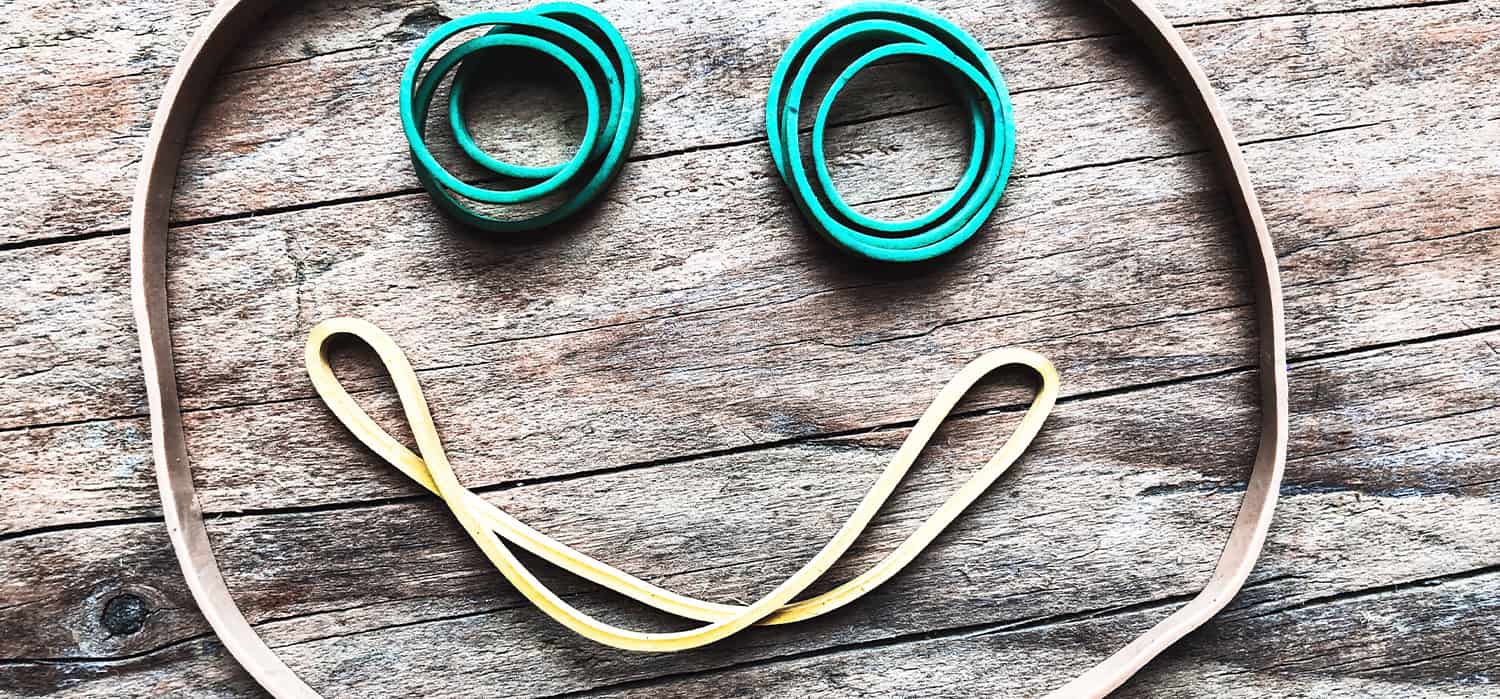Anyone who has had braces is familiar with the small rubber bands that are used during the course of treatment. Sometimes these aren’t patients’ favorite because they occasionally have a strong pull on the jaw, but the rubber bands have an essential part in braces.
Braces Straighten Your Smile
The purpose of braces, of course, is to straighten your smile so that you’re happier and more confident with it. To this end, braces have several parts that work together. The braces themselves help straighten your teeth, while the rubber bands used with braces help to straighten and align your bite. The following is a more detailed breakdown of the various parts that are included in braces.
Brackets Affix to the Teeth
Brackets are the small squares that get affixed to the sides of teeth. They create the foundation onto which other parts of braces can be secured, and most of the teeth that are being repositioned get a bracket affixed to it. Brackets are normally secured for as long as braces are needed, and they’re attached with a strong bonding that goes directly on the teeth’s enamel.
Most brackets are made from stainless steel, which makes the brackets highly visible. A less-visible option is to use clear brackets made from ceramic rather than metal, but even these can become noticeable. All brackets are prone to trapping food around them, and ceramic ones might become stained over time depending on your diet and brushing habits.
If you want the least-visible treatment option available, clear aligners may be a suitable alternative to traditional braces. Clear aligners use a series of invisible trays to reposition the teeth. The trays can be removed when you eat, and they’re normally switched out every few weeks. As a result, these are much less noticeable than either stainless steel or ceramic brackets used for braces.
Bands May Affix to the Molars
In the back of the mouth, bands might be used instead of brackets to affix to the molars. These serve the same purpose as brackets, but they wrap all the way around the tooth. They’re also secured in place with a dental bond.
Archwire Connects Brackets and Bands
The archwire is the metal wire that attaches to the brackets and bands on the teeth, thus connecting all of the teeth along the wire. There is usually an archwire for the upper teeth and one for the lower teeth.
The adjustments made in an archwire are how braces actually reposition the teeth. When a bend is made in the wire, for example, the wire places a strain on the adjacent teeths’ brackets or bands that cause the teeth to shift in the desired direction. Wires can also be used to slide the teeth, such as when closing gaps between adjacent teeth or making room for a new tooth.
Since the archwire is made from metal, it also makes braces more visible. This is another visual point of distinction between braces and clear aligners, the latter of which don’t have an archwire. Instead, clear aligners use the sleeves to reposition teeth.
Ligatures Secure the Archwire
Ligatures are used to secure the archwire in place. These secure the archwire to the brackets or bands, so the wire doesn’t move and it is firmly affixed to the tooth for repositioning.
Most ligatures come as single plastic ligatures, which get individually attached to each bracket or band. There also are connected elastic ligatures and wire ligatures for certain situations, though.
Ligatures are one of the more fun aspects of braces, for single elastic ligature and connected ligatures come in many different colors. Whenever the ligatures are replaced, which happens at most braces appointments, you can select a different color scheme from the available options.
Show your love for a team, choose your favorite color or match your outfit on a special day. There’s no shortage of different ways to make your brackets look good with differently colored ligatures.
Rubber Bands Adjust the Bite
Rubber bands are sometimes called elastics by orthodontists, and they’re typically used to actually reposition the upper and lower teeth. They adjust the bite by connecting the upper and lower teeth, and placing a strain on the teeth in the desired direction. Rubber bands might help adjust overbites, underbites or other orthodontic issues.
Understanding Rubber Bands for Braces
Rubber bands are needed to address overbites and underbites because the brackets and archwires of braces don’t actually fix these issues. Since archwires don’t connect the upper and lower jaws, they can’t realign the jaws so that they’re directly above and below each other. This is what rubber bands do.
Rubber bands get affixed to brackets or bands via little hooks, and a rubber band is almost always attached to the upper teeth at one point and the lower teeth at another point. Because rubber bands become stretched over time, they’re often changed at home.
If rubber bands are needed for a portion of a braces treatment, it’s extremely important to wear the rubber bands consistently. They can be taken out when brushing and flossing, but they should be reinserted immediately afterward. Additionally, rubber bands often should be changed out at least every 12 hours — and likely 3 to 4 times a day depending on what your orthodontist specifically recommends.
Following these instructions is essential when realigning the bite with rubber bands.
Questions About Rubber Bands and Braces?
To learn more about rubber bands specifically or braces in general, contact us at Laster Orthodontics. Our staff members are braces experts, and we’re happy to help you learn more about whether this treatment is right for your smile.
At Laster Orthodontics, we help families develop healthy, life-changing smiles using customized treatments, cutting-edge technologies, and caring relationships. Our individualized treatment plans help our patients achieve their perfect smile in the quickest, most painless way possible by utilizing a wide range of options from traditional braces to propel accelerated treatment to Dr. Laster’s in-house aligner program, Laster Perfect Smile. With three locations throughout the Triangle Area, we create life-changing smiles every day.


